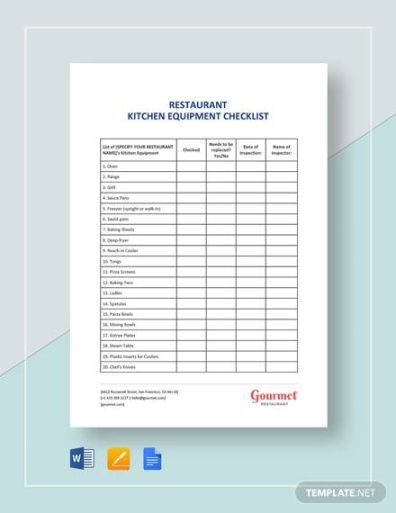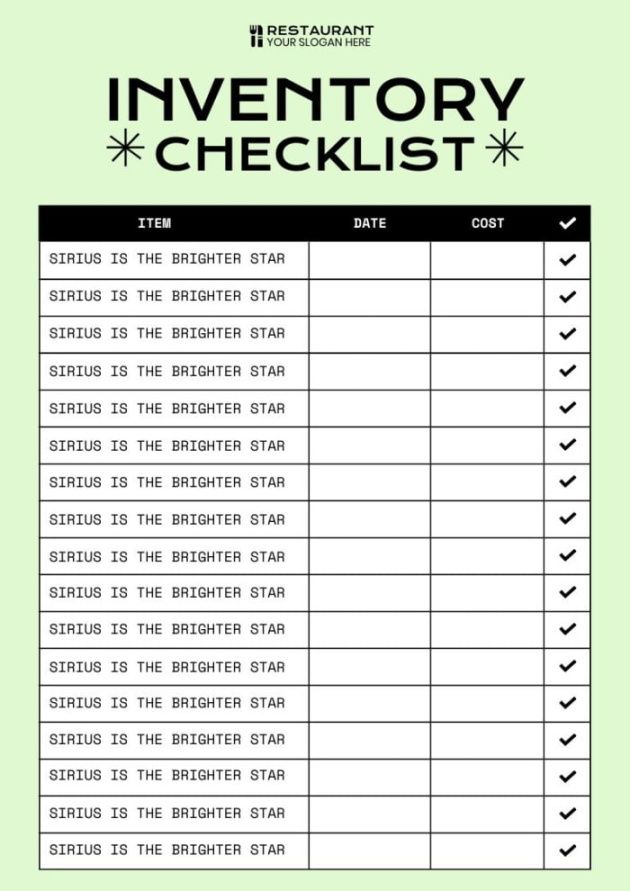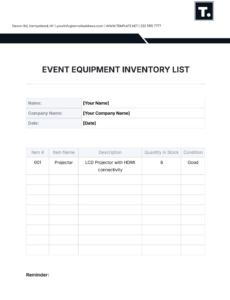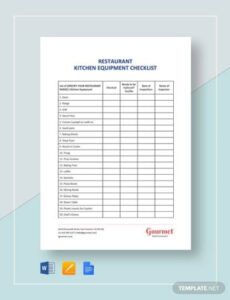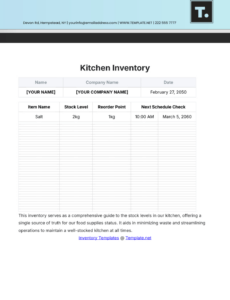Free 7 equipment checklist samples & templates in excel ms word pdf google docs pages kitchen equipment inventory list template doc -Have you ever felt like you’re reinventing the wheel whenever you try to structure your ideas? Whether you’re arranging food supplies, managing responsibilities for work, or listing trip necessities for your next vacation, starting from scratch can be a real time sink. That’s where a powerful resource called a list template comes in. It’s a pre-designed framework that provides a initial format for designing multiple checklists, reducing wasted effort and energy.
Consider this: a structured checklist offers a organized structure, cutting down on precious time and thought capacity. Whether you need a straightforward task organizer, a advanced workflow manager, or a organized task schedule, there’s a format out there ready to simplify your process. Forget about adjusting layouts or struggling to decide on the best layout. The hard work has already been done for you.
In this article, we will take a closer look at the wonderful world of list templates, discovering methods they improve efficiency of your personal and professional tasks. We will delve into the different types of templates available and highlight locations to get top templates. Interested in ditch the blank page and harness structured planning? Time to begin.
The advantages of using a structured format are far-reaching and wide-ranging. Aside from the obvious time-saving aspect, they also support increased organization, reduced errors, and better task execution. Picture not worrying about whether you’ve forgotten a crucial step in a workflow or overlooked an important item on your shopping list. With a thoughtfully designed checklist, those worries become a problem solved.
A widely applied function for structured formats is for simple to-do lists. These can be as basic as listing daily activities to run or as advanced as a daily planner with time slots and priorities. A well-structured to-do list template can significantly enhance time management by providing a structured guide for the week. Think of categories such as “Work”, Individual matters, and Daily responsibilities, each with its own set of duties.
Another key strength is consistency. Using a pre-set checklist across multiple responsibilities or activities helps maintain a uniform process, making it easier to compare and analyze data. This is highly valuable in professional environments where tracking and reporting are essential. A consistent format also makes it more intuitive for collaborators to follow your task organizers, promoting better communication and shared accountability.
Another popular application is record-keeping and management. List templates can be used to keep stock lists, monitor budgets, manage contacts, or even catalog your book collection. The important step is to define the essential fields and key elements you want to store, and then structure a format that makes it easy to input and review the content. For example, a people organizer might include sections for individual designation, mobile contact, email address, and organization association.
In addition, recognize the power of organized planners for creative endeavors. They can be used for brainstorming ideas, structuring content, organizing trips, or even creating meal plans. By delivering a structure for your concepts and perspectives, structured organizers can eliminate writer’s block, stay organized while traveling, and make healthier food choices.
While there are a vast number of ready-to-use structured formats found digitally, sometimes the most effective approach is to design your own personalized checklist that precisely suits your specific requirements. The method is surprisingly straightforward and can be immensely rewarding. By structuring your own formats, you achieve total flexibility over the structure, sections, and functionalities, guaranteeing that the pre-set format is designed to your personal process.
Task Checklists: These are perhaps the simplest and widely used version of structured checklist. They usually feature sections for detailed actions, completion timeframe, priority level, and finished confirmation. They’re ideal for managing daily tasks, tracking project milestones, or even creating shopping lists.
A key consideration to keep in mind is personalization. Is it simple to modify the format to add your own responsibilities and reminders? Can you change the colors and fonts to suit your taste? A well-structured checklist should be adaptable to adjust to your individual workflow. Look for templates that enable you to insert categories, move tasks around, and monitor your completion.
Feel free of playing around with different formats and features. You can apply multiple typefaces, visual themes, and borders to enhance the aesthetics and highlight important information. You can also incorporate features such as selection options, drop-down menus, and formulas to streamline actions and increase functionality.
In reality, the best way to figure out your ideal approach is to explore possibilities. See what kind of layout and design helps you stay focused. Explore different approaches to identify the best organizational type helps you increase efficiency. The options are virtually infinite, and the positives of maintaining efficiency are well worth the effort. So go ahead, adopt the power of organized planners, and see your efficiency increase.
